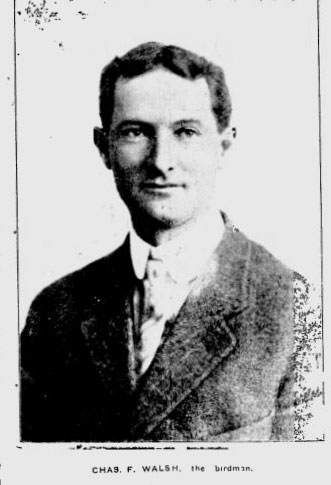Bonham -- On January 24, 1912, the air age arrived in Bonham when famed aviator Charles F. Walsh landed his Curtis bi-plane as part of a flying exhibition. This was only nine years after the Wright brothers' flight at Kittyhawk in 1903.
The event was heavily promoted in the Bonham Daily Favorite and the Honey Grove Signal. An article in the Favorite said that “Bonham is Perhaps The Smallest Town in Texas That Has so Far Attempted Such an Exhibition. It is a Chance of a Lifetime.”
The ad in several issues of the Favorite said:
Air Ships Flying in Bonham
You Can See Them for Fifty Cents
You can see them at the Fair Grounds
A Chance of a Lifetime
Every Citizen of Fannin County Should be Here
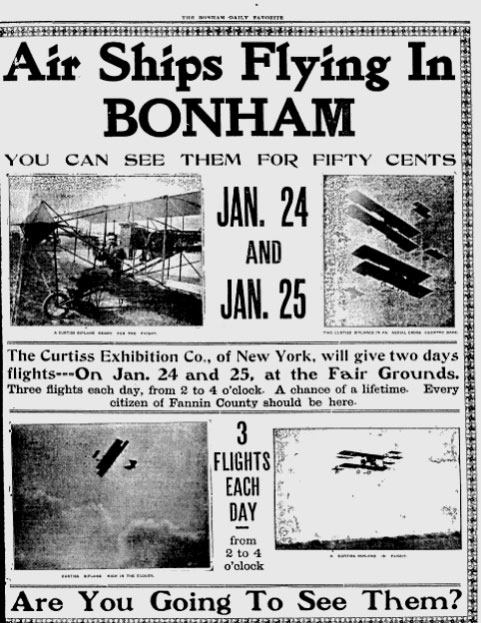
The Favorite reported in its January 25 edition that an “immense crowd witnesse[d] first aerial exhibition ever given in Bonham.” The exhibition was at the “old fair ground race course.” The “crowd that witnessed [the exhibition] was pleased and delighted, enthusiastically cheering the daring birdman on brilliant feats.”
“Mr. Walsh made three beautiful flights . . . remaining in the skies several minutes each time and demonstrating his perfect control over the strange, bird-like machine that was carrying him in spiral dives and glides.”
“The presence of a large number of out-of-town people livened up the day considerably. Citizens from all parts of the county, the largest delegation probably coming over from Honey Grove.”
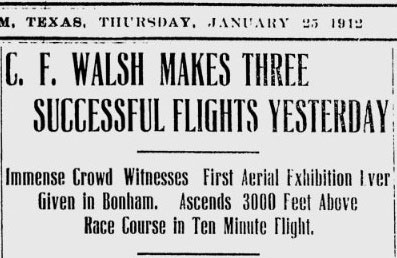
The Fannin County Museum of History has three wonderful photographs of this event.
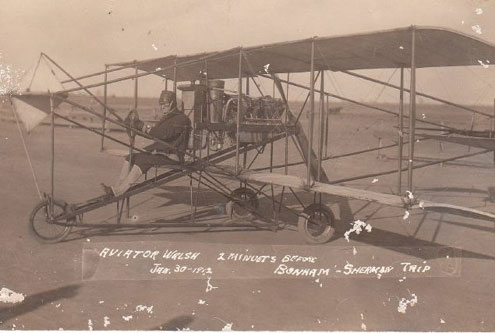
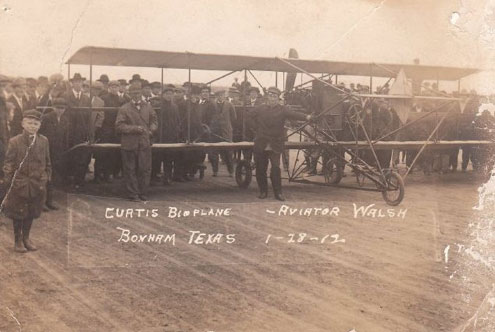
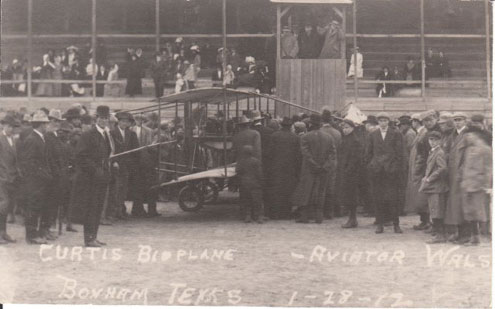
An article by Tom Scott says: A crowd estimated at over two thousand persons witnessed his arrival. Walsh took off down more than 150 feet of the dirt track for the first of his three flights of the day which brought "a roar of applause from the eager and anxious spectators;" as reported in The Bonham Daily Favorite. In the first flight Walsh attained an altitude of 800 feet in the plane, circling the entire fair grounds and demonstrating his versatility with loops, dips, and glides that lasted for ten minutes climaxing in a series of downward spiral glides landing within 50 feet of the racetrack grandstand.
The second flight took place some twenty minutes after the first landing and was obviously designed to give the crowd an even more spectacular view of the aviator's flying skills. His takeoff was considerable shorter than the first and a sudden nose-up maneuver thrilled the crowd into a long period of loud cheering according to press reports. During this flight he attained an altitude of 3000 feet and remained in the air for a ten minute display of dazzling aerobatics.
The third and final exhibition of the afternoon came when Walsh raced a 50 horsepower Kissel automobile. Both the plane and the auto made an even start down the racetrack but before they arrived at the first turn of the one mile track, the plane had outdistanced the Kissel and was speeding far ahead. Three laps of the track were made with Walsh completing the course in under four minutes. Percy Gauldin of Honey Grove drove the Kissel.
After the race Walsh remained in the air for several more minutes giving a continuing exhibition of the graceful manuevers the bi-plane was capable of under his experienced hands. After the demonstrations were completed, members of the crowd were allowed to view the marvelous machine at close proximity. Read the entire Tom Scott article at http://www.fannincountymuseum.org/sketch7.html.
Sadly, Charles Walsh met his death in an aviation accident in Trenton, New Jersey later that year on October 3, 1912 during when his biplane collapsed during an attempted spiral descent.
